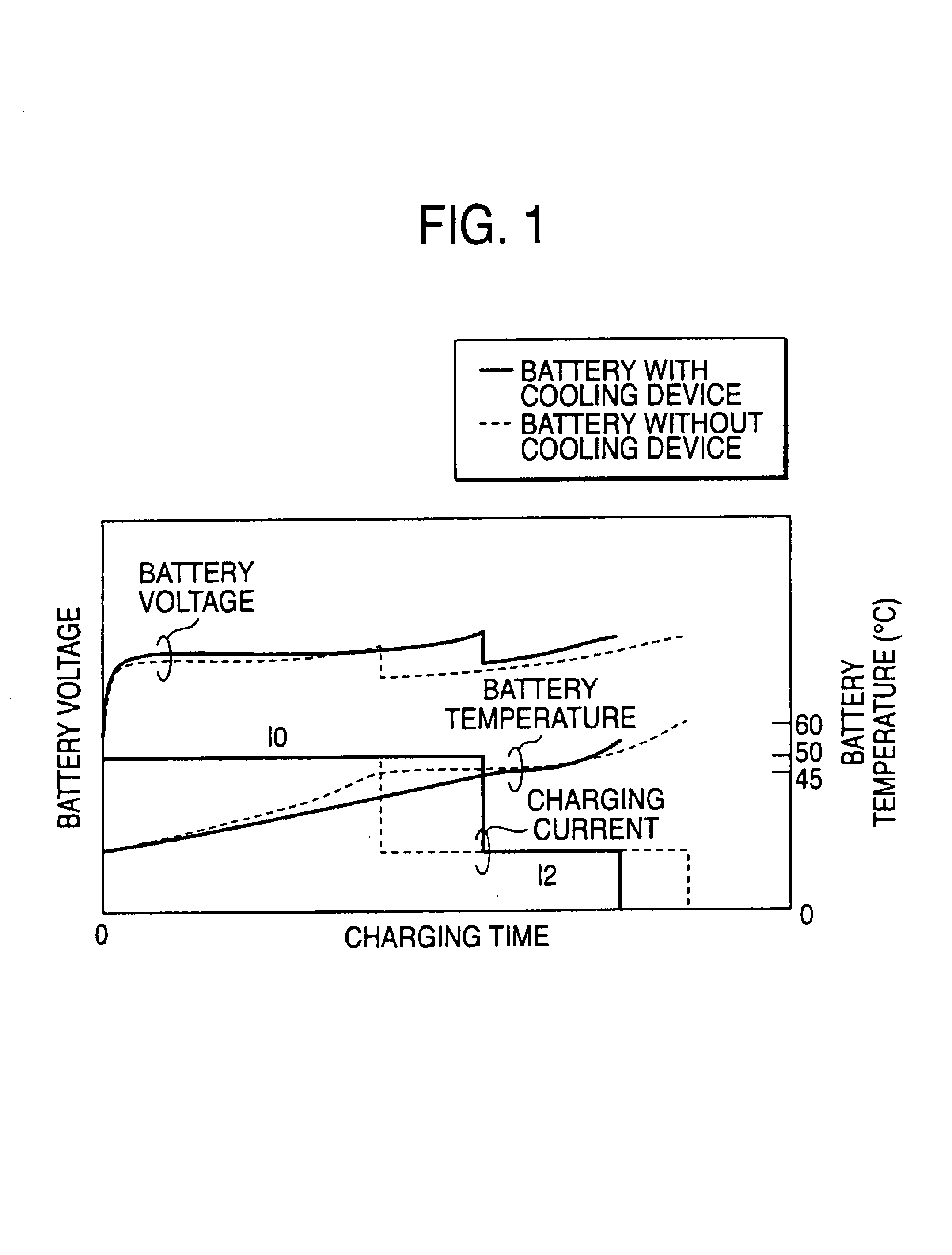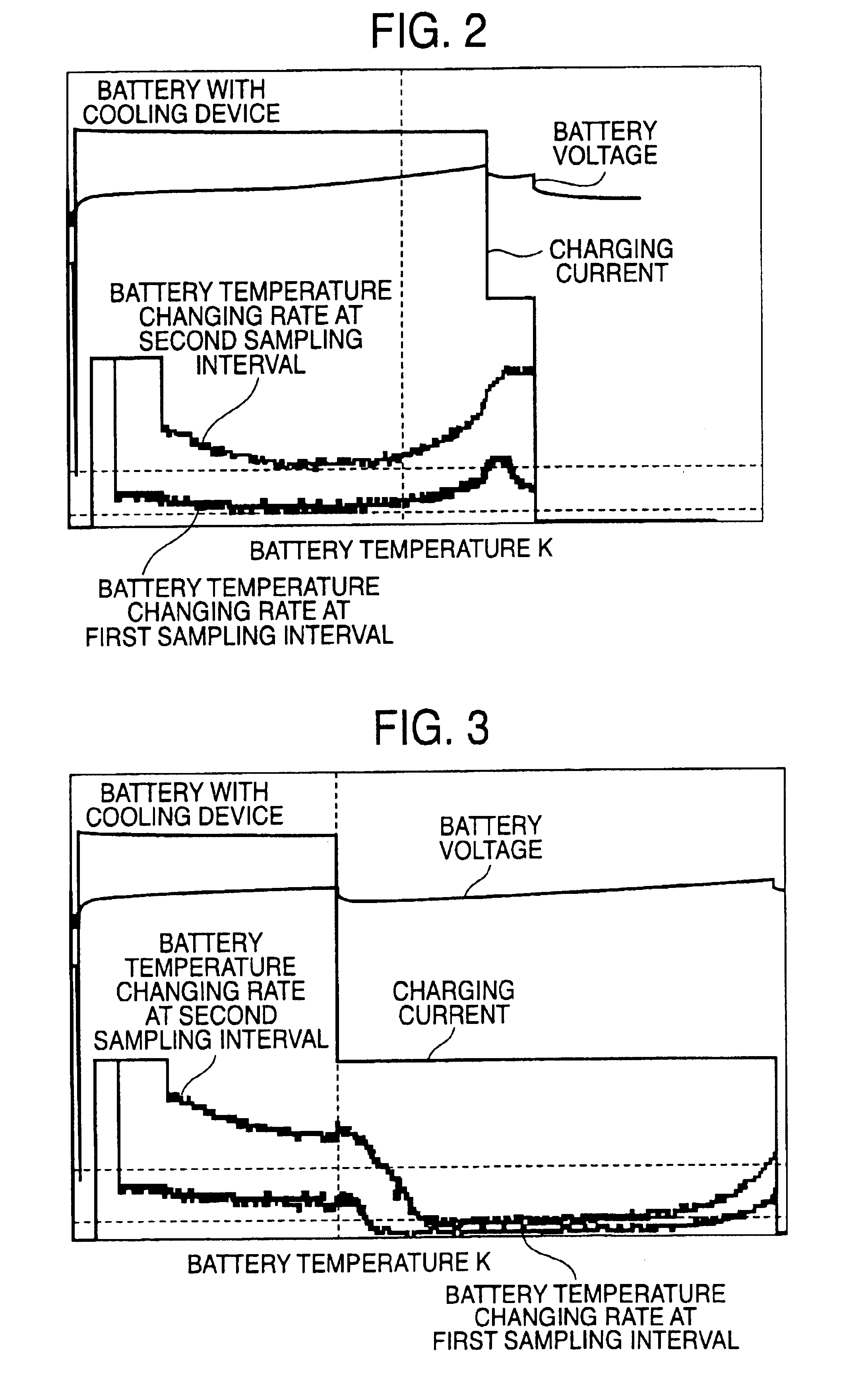Charging apparatus
- Summary
- Abstract
- Description
- Claims
- Application Information
AI Technical Summary
Benefits of technology
Problems solved by technology
Method used
Image
Examples
first embodiment
[0035]FIG. 4 is a circuit block diagram showing the invention. In the figure, 1 depicts an AC power supply, and 2 depicts a battery pack provided with a battery set 2A formed by a plurality of battery cells connected in series and a temperature detecting element 2B such as a thermistor which is made in contact with or disposed near the battery set 2A to detect the temperature of the battery. 3 depicts a current detecting unit for detecting a charging current flowing into the battery pack 2, 4 depicts a charge control signal transmitting unit which transmits a signal for controlling the start and stop of the charging current, and 5 depicts a charging current signal transmitting unit for feeding back the signal of the charging current to a PWM control IC 23. Each of the charge control signal transmitting unit 4 and the charging current signal transmitting unit 5 is formed by a photo coupler etc. for example. 6 depicts a cooling fan for cooling the battery pack 2, and 7 depicts a drivi...
second embodiment
[0055]FIG. 7 is a circuit block diagram showing a charging apparatus according to the invention.
[0056]In this second embodiment, elements common with those of the first embodiment will be referred by the same references and the explanations for the common elements will be omitted.
[0057]The configurations shown in FIG. 7 are broadly the same as those of the first embodiment shown in FIG. 4, but different in the configuration of the microcomputer 50. The microcomputer 50 is formed by a calculation unit (CPU) 51, a ROM 52, a RAM 53′, a timer 54, an A / D converter 55, output ports 56a, 56b, and a reset input port 57. The CPU 51 calculates a plurality of battery temperature changing rates at every predetermined time period based on a newest battery temperature and a battery temperature sampled before plural sampling time periods, and compares a current battery temperature changing rate with a minimum battery temperature changing rate stored in the RAM 53′. The RAM 53′ contains therein a b...
PUM
 Login to View More
Login to View More Abstract
Description
Claims
Application Information
 Login to View More
Login to View More - R&D
- Intellectual Property
- Life Sciences
- Materials
- Tech Scout
- Unparalleled Data Quality
- Higher Quality Content
- 60% Fewer Hallucinations
Browse by: Latest US Patents, China's latest patents, Technical Efficacy Thesaurus, Application Domain, Technology Topic, Popular Technical Reports.
© 2025 PatSnap. All rights reserved.Legal|Privacy policy|Modern Slavery Act Transparency Statement|Sitemap|About US| Contact US: help@patsnap.com



